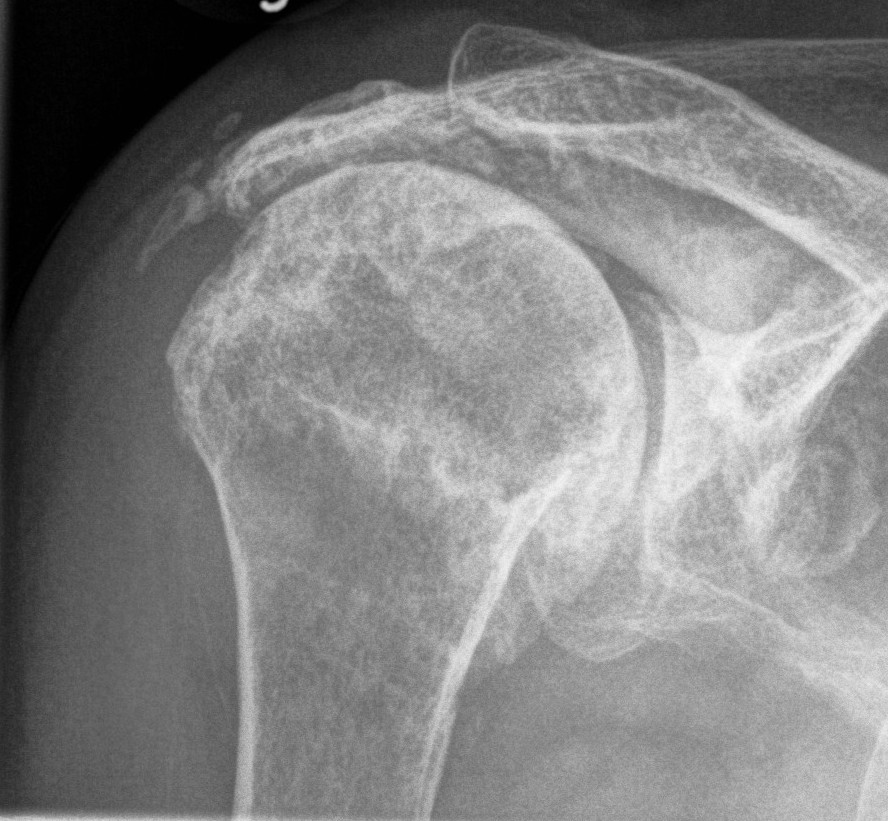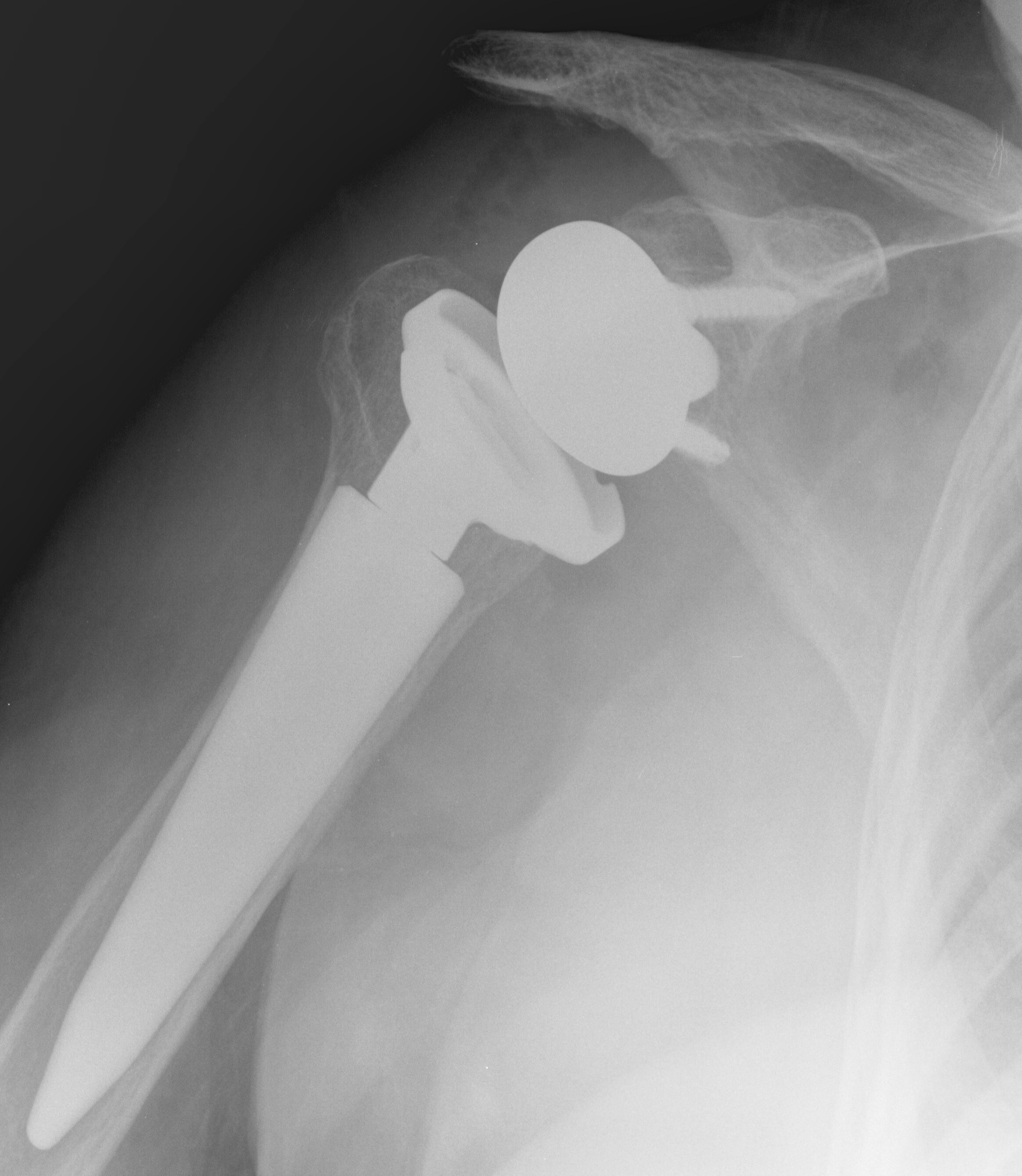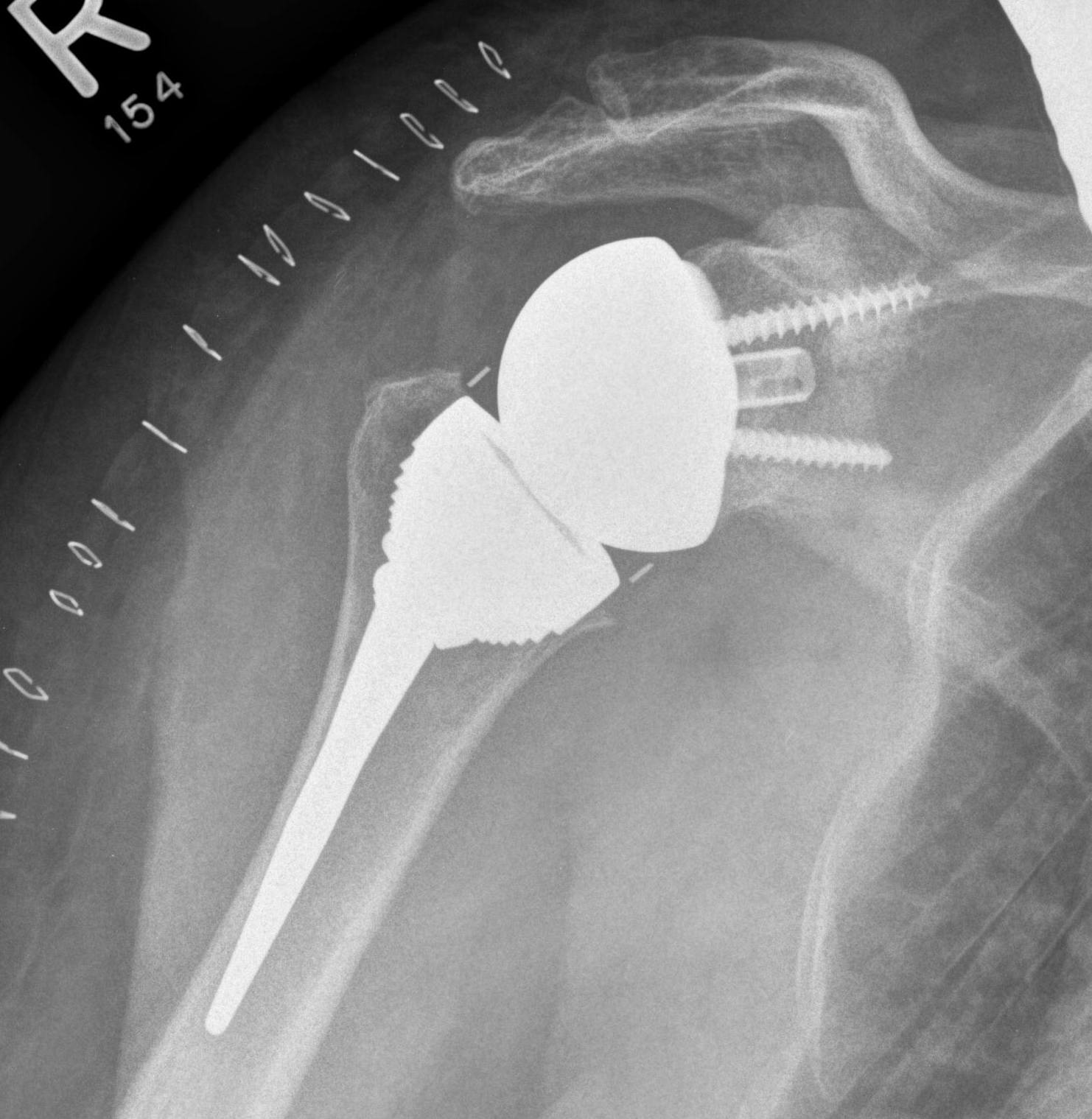
Indications
1. RC arthropathy / > 70 / low functional demand
2. Revision TSR
3. Failed Hemiarthoplasty in proximal humerus fracture
Design

In rotator cuff dysfunction
- humeral head superior causing early failure of conventional TSR
Professor Paul Grammont
- convex articular surface to glenoid
- concave surface humerus
- shifts centre of rotation medially and distally to glenoid
- improves lever arm of deltoid
Limitations of conventional TSR
1. Inability to manage GH translation
Fully conforming surfaces
- humeral and glenoid components same radius curvature
- rim loading must occur with any translation
- rocking horse mechanism
Non conforming surfaces
- glenoid radius curvature > humeral head
- diminishes contact area
- increases local contact pressure
- risk poly failure
2. Limitation of fixation of poly to glenoid
- subject to shear forces
3. Limitations of stability
Anterior instability
- defects SSC or anterior capsule / glenoid
Posterior instability
- posterior glenoid deficiency / dysplasia
- deficient posterior capsule or labrum
Superior instability
- deficient SS or CA ligament / acromion
- laxity of deltoid means it cannot function
- pseudoparalysis from antero-superior escape
4. Deltoid dysfunction
- unable to raise / lower / medialise centre of rotation to compensate for deltoid dysfunction
- without risking loosening and failure of the glenoid component
Features of Reverse TSR
1. GH translation
- does not permit GH translation
- due to conforming concavity of humeral component
- full surface contact maintained during range
- nil rim loading
2. Glenoid fixation
- metaglene fixed by locking and non locking screws along with a central press fit HA coated peg
- metal glenosphere fixed by press taper
- no poly to metal fixation issue
- medialisation of centre of rotation decreases the lever arm of forces
- reduces the moments that challenge fixation


3. Intrinsic stability
- nature of design has increased intrinsic stability
- humeral socket forms an angle of 155o with humeral shaft
- deltoid force acts to stabilise the joint
- less dependence on soft tissue and CA arch
4. Deltoid dysfunction
- able to lower or lateralise COR
- inherent stability allows prosthesis to work even if only part of deltoid functions
Results
ROM
Cuff et al JBJS Am 2008
- 96 patients with minimum 2 years follow up
- abduction increased from 61 to 110o
- flexion 60 to 120o
- ER from 13 to 30o
Complications
Wall et al JBJS Am 2007
- 191 shoulders followed for a minimum two years
- worst results in post traumatic arthritis and revision TSR
- 15 cases of dislocation
- 8 cases of infection
Survival
Guery et al JBJS Am 2006
- calculated 10 year survival rate of 90%
- noted than Constant shoulder scores deteriorated over time
- 60% 10 year survival with Constant score < 30 as an end point
